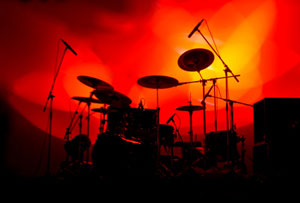 Our mission at Home Brew Audio is to provide you with resources (tutorials, articles, gear reviews, tips and techniques, etc.) to help you achieve your goals and dreams. For some, that will be recording their music so they they can release their own songs or CDs, record demos and auditions, etc. For others, it might be to start a voice-over career – getting paid to be the voice behind radio or TV ads, e-Learning videos, audio books, documentaries, video games, etc. And for some it might mean putting out more professional sounding podcasts, YouTube videos, webinars, sales videos, etc.
Our mission at Home Brew Audio is to provide you with resources (tutorials, articles, gear reviews, tips and techniques, etc.) to help you achieve your goals and dreams. For some, that will be recording their music so they they can release their own songs or CDs, record demos and auditions, etc. For others, it might be to start a voice-over career – getting paid to be the voice behind radio or TV ads, e-Learning videos, audio books, documentaries, video games, etc. And for some it might mean putting out more professional sounding podcasts, YouTube videos, webinars, sales videos, etc.
Either way, there are so many topics out there for us to write about and create tutorials around that I thought it was time to ask you directly what you would like to learn. If you ask us for it, we will build it! We currently have 2 full tutorial courses out.
The 1st one, The Newbies Guide To Audio Recording Awesomeness 1, teaches basic computer audio recording techniques for those with a very small budget for gear or software using Audacity software (free).
Our 2nd course, The Newbies Guide To Audio Recording Awesomeness 2: Pro Recording With Reaper, takes you to the next level of audio recording capability and quality, but still at a pretty small budget for software and gear, using Reaper software ($60) and a large diaphragm condenser USB mic you can buy at Best Buy (or pretty much any music store, and certainly on-line for about $70).
Then there is our eBook and video combo mini-course How To Build A Home Recording Studio, which shows you what equipment and software you will need to set up a professional home recording studio, from types of microphones and interfaces to headphones, mic stands and software. There are also 4 tips for getting the best possible quality out of any set-up you choose to use.
Now I want you to tell us what you would like us to provide next. Maybe you’d like a course on podcasting or releasing your own CD. Or perhaps you want to see something about more advanced music recording topics like stereo miking techniques, EQ, compression and limiting, submixes, or mastering. We can do any and all of those and more. But I’d much rather prioritize based on what you want the most.
So please just leave us a comment below telling us what you’d like to know more about. Try to answer the question: “I’d really like to see a course on how to _______” or “I’d like a lot more in-depth information on____________” for something we may have introduced but not really delved into. That way I will be much more certain that what we are teaching is what you want to learn.
Again, just let us know by commenting below, and we’ll gather all that information and get to work giving you what you want.
Cheers!
Recording Tips and Techniques
An Interesting Vocal Compression Tip
WinkSound put out a video that offers an unusual tip for using compression on a vocal in a mix. It refers to some common compressor controls the I go over in my recent post on how to use Reaper’s built-in compressor plugin called ReaComp. See that article here: Vocal Compression Using Reaper’s ReaComp Effect Plugin. In this WinkSound video tip, conventional settings are pretty much thrown out in that it is recommended to turn both the attack and release controls all the way to the fastest possible settings. In combination with those settings, in order to not completely destroy the vocal with over-compression, a quite high threshold is used (about -10db) and a subtle compression ratio.
But things are usually made more clear by watching. So below is the video of which I speak:
Creating Pre-Chorus Builds Using Native Instruments Massive Synthesizer
Often before the chorus in a song, you have a build-up of emotion caused by the chord structure as well as the volume and intensity of the recorded music. Here’s a video that shows you how to create the kind of build you would likely hear in electronic Dance Music (EDM). It uses the Massive software synthesizer, from Native Instruments. Massive is hard to get now as a stand-alone purchase, but it is included in several other NI products, such as their Maschine Groove Production Studio and the Komplete Virtual Instruments and Effects Collection.
Anyway, below is the video showing you how to create the builds:
Mixing Tips For Recorded Drums
 Here are some tips for getting nice punchy drums in your recordings. In the title, I specifically say recorded drums because these tips by Bjorgvin Benediktsson talk about treating the overheads, which mean the recorded sound of all the drums coming through a pair of microphones set up high and a god distance away from the drum kit to capture the whole of the kit rather than any individual drum. If you didn’t record the drums, but rather use MIDI drums or some other form of virtual drumming in your mix, you likely won’t have any overheads to treat.
Here are some tips for getting nice punchy drums in your recordings. In the title, I specifically say recorded drums because these tips by Bjorgvin Benediktsson talk about treating the overheads, which mean the recorded sound of all the drums coming through a pair of microphones set up high and a god distance away from the drum kit to capture the whole of the kit rather than any individual drum. If you didn’t record the drums, but rather use MIDI drums or some other form of virtual drumming in your mix, you likely won’t have any overheads to treat.
Of course some computer drum programs out there are more sophisticated than others. The one that comes to mind for me is my new favorite drum program called Drum Experience (by Centipeak), which not only gives you samples of each drum at multiple velocities (each velocity is actually a different recording sample), but also gives you unparalleled samples of microphone feeds as well. For example, not only do you get overhead mics for a kit, but you also get the option of turning on or off the different mic feeds for every drum! Simply amazing.
But I digress. This is supposed to be about what to do in your multi-track software (or console if you’re old-school) to get a tight and punchy drum sound. The tips involve a sequence, such as treating the overheads first, and types of effects to apply (mostly EQ, compression) to overheads and individual drums.
Read Bjorgvin’s post here: http://www.audio-issues.com/music-mixing/how-to-mix-drums-rockstar/
Tips For Recording Your Podcast
Publishing a podcast is an excellent and fun way to basically syndicate your own radio show. But a good podcast starts with good quality audio recording, which is actually pretty rare – something that baffles me, since it is easier and cheaper than ever before to record professional quality audio right from a cheap home studio. Just check out any of the hundreds of articles on our site for how to do that here.
But there are some more specific things you can do for podcast recording that apply no matter what gear you use. Check out the article below for these tips:
http://www.podcasting-tools.com/audio-recording-tips.htm